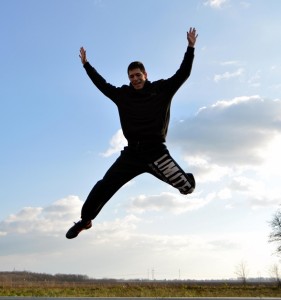 What is the right answer? How do we know we have the answer to a challenge we face? Do we stop and look to see what’s next? Roger von Oech in his 1983 book, A Whack On The Side Of the Head, talks about releasing those mental “locks” that keep us from being innovative; from finding that “next best thing.” One of those locks is “The Right Answer” and Oech asks us to look for that second right answer. I expand that by asking my clients for their third and even their fourth right answer. The problem is that we are conditioned from an early age to find the one right answer, when in fact there can be many answers to a question or challenging situation.
What is the right answer? How do we know we have the answer to a challenge we face? Do we stop and look to see what’s next? Roger von Oech in his 1983 book, A Whack On The Side Of the Head, talks about releasing those mental “locks” that keep us from being innovative; from finding that “next best thing.” One of those locks is “The Right Answer” and Oech asks us to look for that second right answer. I expand that by asking my clients for their third and even their fourth right answer. The problem is that we are conditioned from an early age to find the one right answer, when in fact there can be many answers to a question or challenging situation.
We have been accustomed to being confronted with a situation and to find an immediate solution. In school these were called exams, and we usually had a limited amount of time to respond. For many, that mindset has transferred to the workplace, where it is asked, and often demanded, of us to find solutions to problems ASAP. This single response or answer to a question, issue or challenge has been coined “Single Loop learning” (Argyris, 1995) and often leads to short, incremental learning in a given situation, which is then carried on to the next situation. It may work, but only in the short term and not very effectively. The end result may provide an adequate response, but there may have been, and probably was, a more beneficial, longer tem solution available.
Let’s say I am faced with an issue where something has gone wrong. I may be asked by my manager, “What could you have done differently?” I think about it and say, “Well if I had done X instead of Y, I would have got a different result. Let’s try X.” This is Single Loop. However, imagine that my manager asked me why I did what I did, and to think about why I might want to do something different; to think about possible outcomes (both negative and positive) and to maybe even look deeper for the “next” right answer. This is the Double Loop learning also coined by Argyris. This is also where many people stop, believing they have found “the” solution and can now move ahead. But what if there are still other options, answers? Hargrove (Masterful Coaching, 2008) presents us with a third option: the Triple Loop. This is more complex yet and is an option that demands that we be stretched – perhaps to an uncomfortable degree – to find solutions and actions. It could be something like, “Who do you want to be in this situation?” – Wow, that could even hurt.
Oech stated that “Discovery consists of looking at the same thing as everyone else and thinking something different.” How can you look at something – a situation, a challenge – from a different point of view and find a second, third or even fourth solution? What are some of the questions you need to ask yourself to get there?
John K Whitehead & Associates assists individuals and organizations in becoming more effective by improving their interpersonal communications, emotional intelligence and resiliency.
You can read my blog at https://johnkwhitehead.ca
If you have enjoyed reading these posts, please Follow Me
